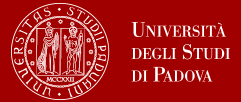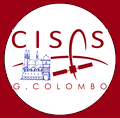35th Cycle Research Projects
CAON ALEX - Development a smart capture system for On-Orbit-Servicing with space robots
Research project
The project aims to develop and test an capture interface for space capture performed by robotic arm. The interface shall be adjustable for several satellites dimensions and it shall be equipped with ad –hoc control algorithms.
CHIOETTO PAOLO - Optical and Opto-mechanical Analysis and Design of the Telescope for the Ariel Mission
Research project
"Optical Analysis and Design of Space Vis/IR Telescopes and Instruments"
DI FEDE SIMONE - Optimization of the magnetic nozzle of a 50 W helicon plasma thruster
Research project
PhD research project description: Optimization of a 50 W Magnetically Enhanced Plasma Thruster. S. Di Fede, Università degli Studi di Padova - CISAS "G. Colombo", Padova, Italy. Recent advances in plasma-based propulsion systems have led to the development of electromagnetic Radio-Frequency (RF) plasma generation and acceleration systems, called Magnetically Enhanced Plasma Thrusters (MEPT) [1]. The purpose of the research project is the performance optimization of a 50 W MEPT. The MEPT can be considered as an electrical propulsion system where the plasma is generated in a Magnetically Enhanced plasma source. The latter consists in a dielectric tube surrounded by coils that generate a magneto-static field (intensity up to 0.15 T) and a RF antenna working in the frequency range 1-50 MHz. The electromagnetic waves produced by the antenna cause the gas to break down and to heat up. The propellant is accelerated afterwards by means of a magnetic nozzle. Specifically, in the region downstream the source outlet, the magneto-static field lines are divergent. This particular magnetic topology induce a conversion of the thermal energy of the plasma into axial acceleration and, in turn, into thrust. Therefore, the propulsive figure of merit (e.g. thrust and specific impulse) of a MEPT are related to the power coupling between the antenna and the plasma along with to the acceleration process in the magnetic nozzle. The optimization of the thruster will be performed with a combined numerical-experimental approach. From a numerical standpoint, the 3D-Virtus code, a numerical tool based on a fluid numerical strategy, will be used to simulate the Magnetically Enhanced plasma source; instead the plume will be simulated with a Particle-In-Cell (PIC) strategy. The thruster will be characterized experimentally in the vacuum facility of the University of Padova by means of a thrust balance to evaluate the propulsive performances, along with Langmuir probes to evaluate the plasma properties (e.g., density and temperature). Initially, 3D-VIRTUS will be adapted to consider new specifications (e.g., Xe plasma). The code will then be validated against experimental results and finally a combined numerical-experimental approach will permit to optimize the Magnetically Enhanced plasma source. Successively, the correct boundary conditions definition will permit to use a PIC code to simulate the plume. After the code experimental validation, a combined numerical-experimental approach will permit to optimize the magnetic nozzle. References [1] M. Magarotto E. Fantino A. Selmo N. Bellomo E. Toson D. Pavarin M. Manente, F. Trezzolani. Regulus: A propulsion platform to boost small satellite missions. Acta Astronautica 157, 2019.
ZOU SHENGYU - Fragmentation models for Hypervelocity impact
Research project
Currently research on the PhD project of "Fragmentation Models for Hypervelocity Impact", which is based on the framework of the new semi-empirical breakup model, called CST (Collision Simulation Tool) developed by the group in CISAS. The general research objective of this PhD activities would be making further development in this simulation tool by updating the fragmentation model for hypervelocity to improve the simulation accuracy. Specifically, the modeling activities research will be carried out by taking into account some typical effects influencing on fragmentation such as projectile shape, impact attitudes and new materials used for satellites, etc. to better determine the velocity distribution and the size/mass distribution of fragments by considering the mass balance, momentum and energy conservation of the fragmentation process. Besides, calibrating and validation experiments of hypervelocity impact for the modified model will be carried out in the laboratory by developing an instrument or a test setup to get the fragmentation data.






